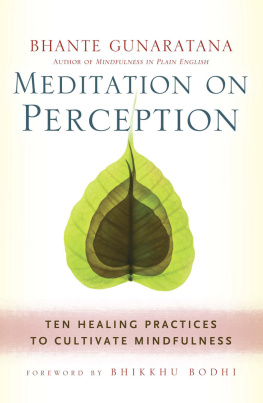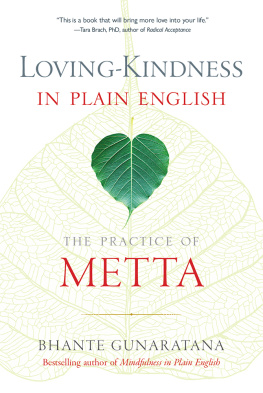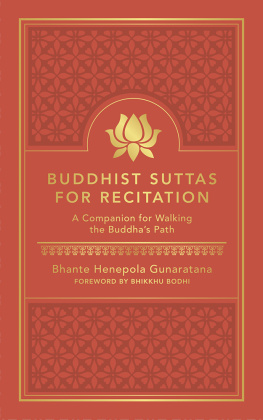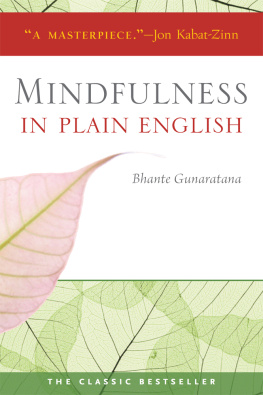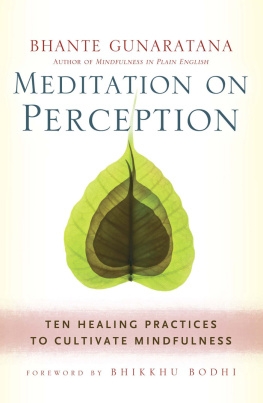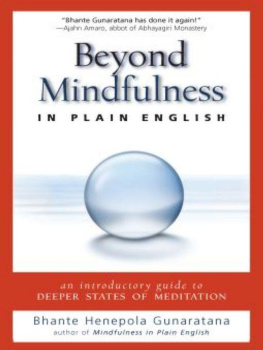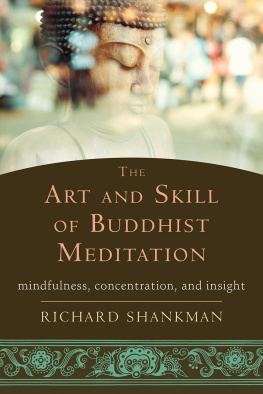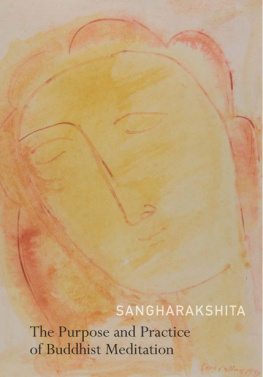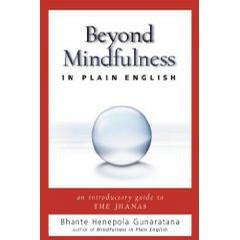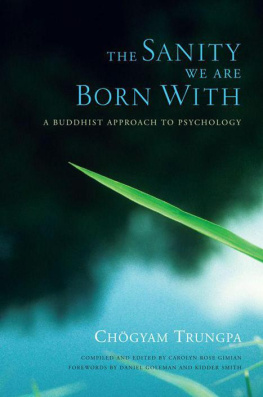M EDITATION ON P ERCEPTION


Bhante Gunaratana offers us another clear and practical guide for meditation. Beginning practitioners and seasoned meditators alike will appreciate this direct approach to liberating insight.
S HAILA C ATHERINE, AUTHOR OF F OCUSED AND F EARLESS
U se the unique Buddhist practice of meditation on perception, as taught by the bestselling author of Mindfulness in Plain English, to learn how shifting your perspective can transform mental and physical health.
Yes, he did it again! Bhante Gs latest book on the power of perception delivers a profound teaching from the Buddha in clear, precise, everyday language. This book will be of great practical value to all new and experienced meditating yogis.
L ARRY R OSENBERG, AUTHOR OF T HREE S TEPS TO A WAKENING
Bhante Gunaratana has described with remarkable clarity a step-by-step guide to practicing ten profound meditations on perception.
M ATTHEW F LICKSTEIN, AUTHOR OF T HE M EDITATOR S W ORKBOOK
The meditations in this little book, if applied as directed, enable the greatest healing of allto be at peace with all things.
A JAHN A MARO, ABBOT OF THE A MARAVATI B UDDHIST M ONASTERY

Bhante Gunaratana is the author of Mindfulness in Plain English, Beyond Mindfulness in Plain English, Eight Mindful Steps to Happiness, The Four Foundations of Mindfulness in Plain English, as well as his autobiography, Journey to Mindfulness. He lives in High View, West Virginia.
Wisdom Publications
199 Elm Street
Somerville MA 02144 USA
www.wisdompubs.org
2014 Bhante Gunaratana
All rights reserved.
No part of this book may be reproduced in any form or by any means, electronic or mechanical, including photography, recording, or by any information storage and retrieval system or technologies now known or later developed, without permission in writing from the publisher.
Library of Congress Cataloging-in-Publication Data
Gunaratana, Henepola, 1927 author.
Meditation on perception : ten healing practices to cultivate mindfulness / Bhante Gunaratana.
pages cm
Includes bibliographical references and index.
ISBN 978-1-61429-085-8 (pbk. : alk. paper) ISBN 1-61429-085-7 (pbk. : alk. paper) ISBN 978-1-61429-105-3 (ebook)
1. MeditationBuddhism. 2. Perception. I. Title.
BQ5612.G855 2014
294.34435dc23
2013047898
18 17 16 15 14
5 4 3 2 1
Cover design by Phil Pascuzzo. Interior design by Gopa&Ted2, Inc.
C ONTENTS
T HE FUNDAMENTAL B UDDHIST teaching of the Four Noble Truths shows that it is craving, the blind thirst for self-centered enjoyment, which underlies all suffering and drives the cycle of repeated birth and death, sasra. In other teachings, however, the Buddha points out that the causal relationship between craving and suffering is not final. Craving is itself conditioned, originating from a still deeper root known as ignorance. The Pali word for ignorance, avijj, is a negation meaning the absence of accurate knowledge (vijj). This indicates that what underlies craving and other defiled emotionssuch as hatred, anger, pride, and envyis a failure in cognition. We drift in the current of craving because we do not understand things correctly, because we lack knowledge and vision of things as they actually are.
Though the word ignorance is a negation, in the bustle of our daily lives ignorance takes on an active role, issuing in distorted modes of understanding that turn upside down our lived experience of the world. Under the control of ignorance, our cognitive faculties filter the world in such a way that things that are really impermanent, deficient, empty of self, and repulsive appear to us as their exact opposites: as permanent, as enjoyable, as our true self, and as desirable. These inversions or distorted modes of cognition operate at several levels. At the coarsest level they determine our fixed views; more deeply, they infest our concepts and thoughts; and most deeply, they govern even our perceptions. Thus we not only conceive things in a distorted manner, but we even perceive the world around us, and most intimately, our own being, as testimony to these flawed notions of permanence, enjoyment, selfhood, and sensual beauty.
We can discern in this process an intricate pattern of causation. Below the threshold of conscious awareness, ignorance infiltrates our perceptions, and from there spreads to our thoughts and views, resulting in distorted modes of understanding. These distorted modes of understanding provoke and reinforce craving along with attachment, aversion, conceit, and other defilements, which then bind us more tightly to the cycle of repeated birth and death. And as we wander on from one life to the next, again and again we encounter the myriad forms of suffering: old age, illness, and death, sorrow, dejection, and despair.
Given this pattern of causation, the path to release from suffering involves not only a sustained volitional effort to resist the lure of craving but a parallel attempt to transform cognition. The ultimate aim in cultivating the Buddhas path is to arrive at a cognitive breakthrough that uproots ignorance from its nest in the deep recesses of the mind. This requires a carefully designed strategy. To achieve final victory it is necessary not only to rupture the causal link between feeling and cravingwhich is highlighted in many suttasbut to reverse the sequence that leads from ignorance to distorted views. This means that our perceptions must be transformed. Perception must be reoriented so that, instead of seeing things in ways that reinforce craving and other defiled attitudes, we perceive in ways that debilitate craving and ultimately eliminate ignorance.
The path to final freedom can thus be understood in part as a process by which we learn to recognize distorted perceptions for what they are and replace them with correct perceptions. This is a demanding project of mental training, but the Buddhas discourses provide us with guideposts to the kinds of perception we must develop. These perceptions (sa) are at the same time contemplations. In fact, the Pali word usually translated as contemplation, anupassan, literally means close and repeated (anu) seeing (passan). It is this training in close seeing, sustained and repeated over time, that culminates in vipassan, insight or special seeing. And it is insight that leads to the wisdom of the world-transcending path, which brings the fruit of ultimate liberation.
Among the early collections of the Buddhas discourses, emphasis on the training in right perception appears most prominently in the Aguttara Nikya, the Collection of Numerical Discourses, where the sequence of chapters is governed by an ascending numerical scheme, from the Ones to the Elevens. Several series of texts running through the later chapters of this collection highlight the role of perceptual transformation in facilitating the attainment of nibbna. The series begins in the Book of Fives, where the Buddha introduces two groups of five perceptions of which he says, when developed and cultivated, they are of great fruit and benefit, culminating in the deathless, having the deathless as their consummation (5:61, 5:62). In the Sevens, we again meet two sets of seven perceptions that culminate in the deathless (7:48, 7:49), and so in the Nines (9:16) and the Tens (10:5657).
Next page
